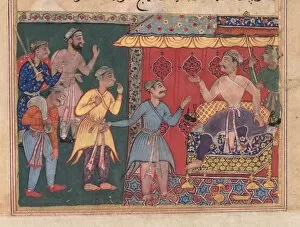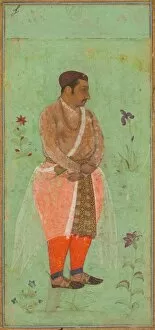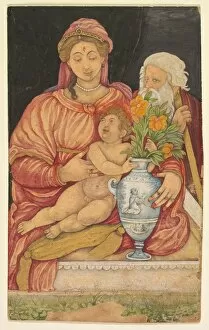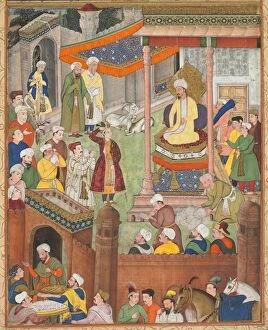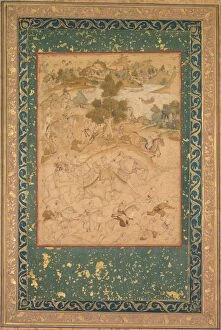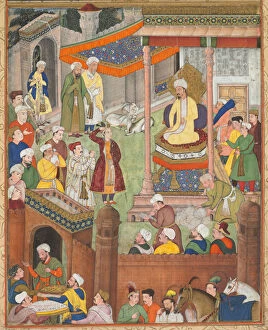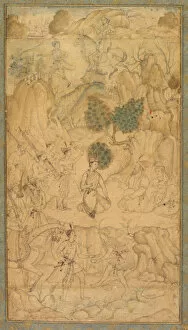Mughal Court Collection
The Mughal Court: A Glimpse into Royal Splendor Step into the opulent world of the Mughal court
For sale as Licensed Images
Choose your image, Select your licence and Download the media
The Mughal Court: A Glimpse into Royal Splendor Step into the opulent world of the Mughal court, where grandeur and refinement intertwine to create a mesmerizing tapestry of art, culture, and power. The court was a hub of activity, bustling with intrigue, politics, and artistic endeavors that shaped the course of history. In one corner of this magnificent realm, Timur distributes gifts from his grandson, the Prince of Multan. The air is filled with anticipation as precious treasures are bestowed upon loyal subjects in a display of generosity fit for royalty. Meanwhile, in another tale from the Tuti-nama (Tales of a Parrot), King Bhojaraja struggles to unravel an enigma on the twelfth night—an intriguing glimpse into the intellectual pursuits that captivated minds within these hallowed walls. As you wander through this captivating space adorned with masterpieces from renowned artists like Govardhan and Mir Ali, your eyes fall upon a Shamsa (sunburst) featuring Aurangzeb's portrait—a testament to his reign during tumultuous times. Nearby stands an aged Akbar captured in timeless beauty by Govardhan himself—a poignant reminder of past glory. The portraits continue to enthrall as you encounter Suraj Singh Rathor—Raja of Marwar and maternal uncle to Shah Jahan—his regal countenance immortalized by Mir Ali's skilled hand. And just beyond lies an enchanting scene depicting a prince seeking wisdom from a holy man amidst rocky landscapes—an allegory for spiritual enlightenment transcending earthly boundaries. But it is not only nobility that graces these halls; love finds its place too. Lovers parting tugs at heartstrings as emotions spill onto pages from an ancient book of fables—a tender moment frozen in time by unknown hands. And nearby rests Nur Jahan herself holding Emperor Jahangir's portrait—an emblem of her influential role as a queen and power behind the throne.


